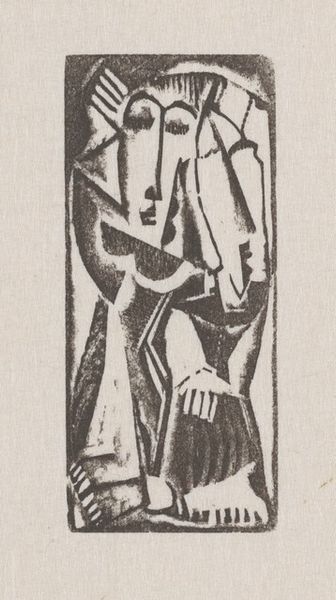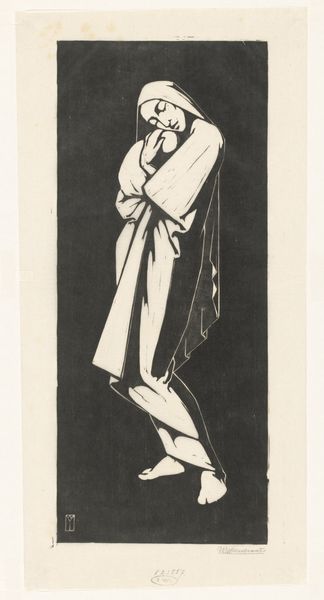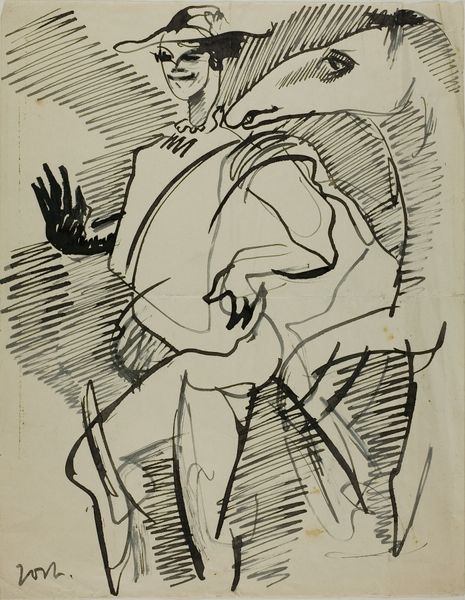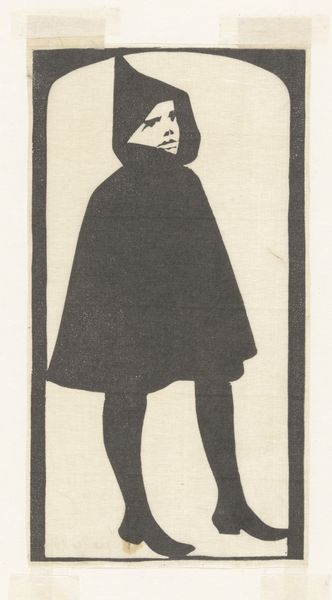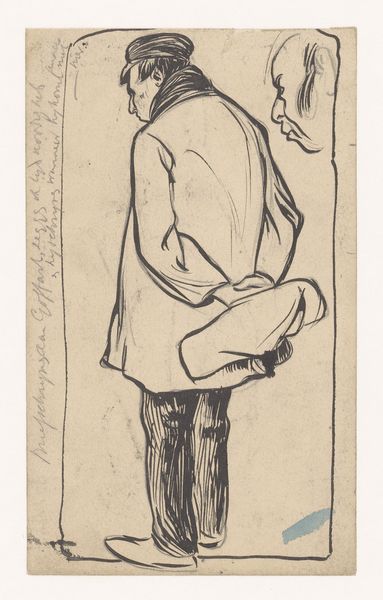
Copyright: Rijks Museum: Open Domain
Editor: Here we have a postcard, "Prentbriefkaart aan Willem Bogtman," made before 1921 by Richard Nicolaüs Roland Holst. It looks like a woodcut print using ink on paper. There's this dramatic figure holding what looks like a sleeping figure in their arms. What catches my attention is the bold, stark contrast of the lines; it almost reminds me of a theatrical poster. What are your thoughts on this artwork? Curator: The dramatic quality you’ve observed highlights the process inherent in woodcut printing: the deliberate carving away to reveal the image. We must consider how the choice of materials, wood and ink, speaks to accessibility. Woodcuts allow for relatively easy reproduction. What does this suggest about the intended audience and distribution of such imagery? The figure’s attire, seemingly medieval, alongside the woodcut medium places it within a historical craft tradition but aimed toward what sort of contemporary engagement? Editor: That makes sense. So, the medium itself might point to making it more accessible... maybe it suggests a broader audience beyond just the wealthy art collectors? Is it then, a statement about art consumption in a way? Curator: Precisely. It forces us to consider the economics of art production, the artist's relationship to craft and the potential for a democratized distribution. Who was Willem Bogtman, the receiver of the postcard? What circles did he move in, and what purpose would such a striking, cheaply reproduced image serve in that context? What statement does that send, using a woodcut, against a drawing for example? Editor: That’s a perspective I hadn’t considered – that the very material and method carries so much meaning about access and purpose, even in a simple postcard! It's given me a new way to appreciate prints. Curator: Indeed. Thinking about art through the lens of materials and production opens up questions about value, audience, and the artist's intention within the broader social landscape.
Comments
No comments
Be the first to comment and join the conversation on the ultimate creative platform.





